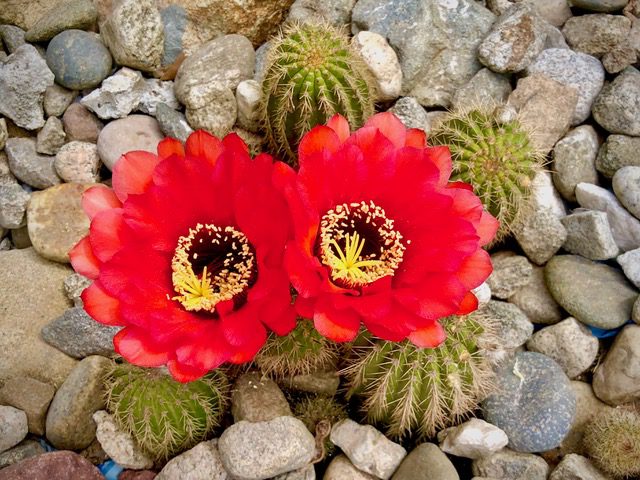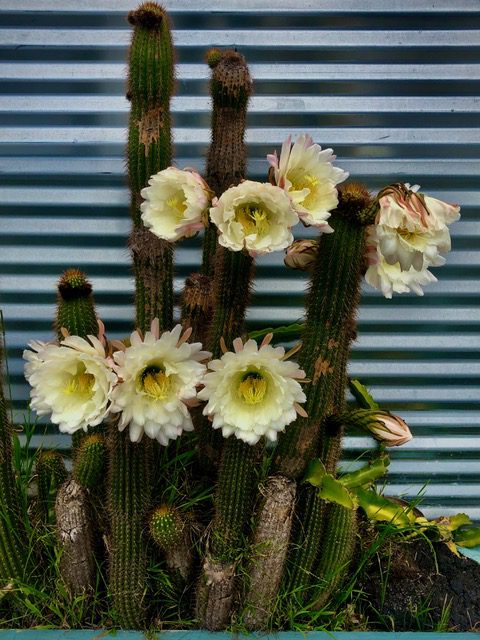Prickly Beauties: 7 Flowering Cacti Easy To Love
By Sherry Dean Curreri

For many years, I have been photographing and researching cactus flowers in South California.
Why am I so fascinated by cacti? They are so self-reliant, unique, strong and come in so many varieties – about 2000 plants bearing interesting blossoms. And yes, they can be prickly and dangerous if not careful.
Native American cultures believe that the cactus represents protection and love because cacti plants can survive in harsh conditions. In fact, they have become a symbol to some of the unconditional love of mothers.
Although currently growing in dry, hot climates throughout the world, they are native to the Americas. The oldest known cactus fossil was found in Utah and dates back 50 million years! Scientists believe that the plant was very similar to today’s Prickly Pear Cactus.
Flowers remind us both of continuity as well as strength and beauty.
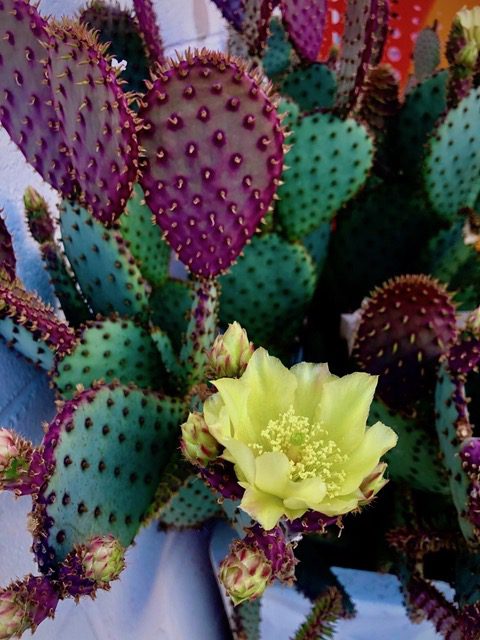
1) Santa Rita Prickly Pear Cactus (Optunia Violacea)
Whether blossoming or not, the Santa Rita Prickly Pear Cactus with its purple to blue-grey pads is always gorgeous. Hailing from the Mexican Sonoran Desert, but named for Arizona’s Santa Rita Mountains, this slow-growing plant will survive cooler temperatures, even light frost, as long as it gets full sun and minimal water.
Its vivid yellow flowers bear small, edible magenta fruit.
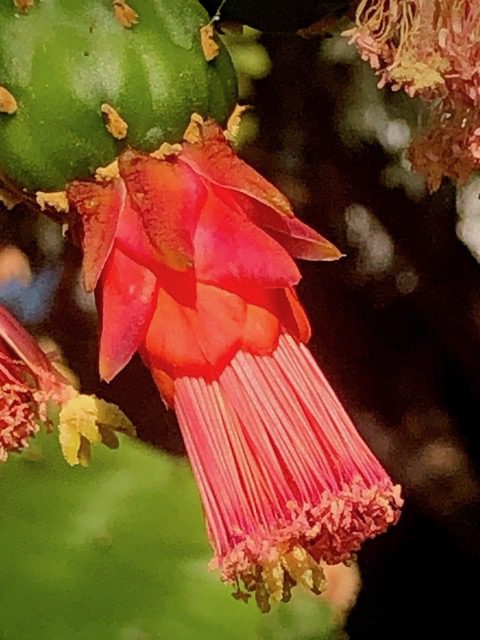
2) Cochineal Nopal Cactus (Cochineal Opuntia)
Another type of prickly pear cactus is the Cochineal Nopal Cactus, which is perhaps a little less “dangerous” than others, because several varities have thornless, thick, paddle-like leaves, which some say are actually pleasant to touch. (Proceed with caution, though, because there are thorns on other parts of this plant.)
A fast-growing shrub that thrives with neglect, Cochineal Nopal Cactus that can be grown in almost any conditions in the southwestern regions of the United States and Mexico.
The flat cactus pads can be eaten when the plant is young, but older plants will get too tough to eat. The flowers give way to a fruit which is also edible, but you must carefully peel and remove the small, hairy prickles called glochids.
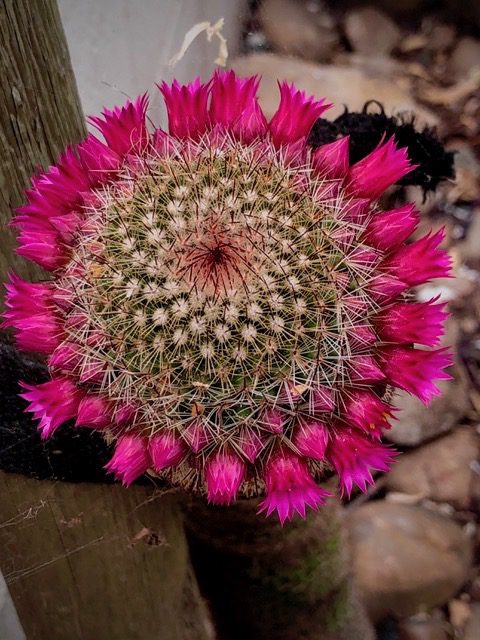
3) Spiny Pincushion Cactus (Mammillaria spinosissima)
Spiny Pincushion Cactus are cylindrical plants, which, when they bloom, produce a ring of colorful, funnel-shaped flowers around the apex of the stem in shades of pink, red, yellow, and white. They grow low to the ground in well-drained soil and only need to
be watered once every two to three weeks. Relatively small, both in the ground or in pots, they can be globular or elongated, their native habitat ranges from Colombia and Venezuela to the West Indies to the Southwestern United States. The greatest variety, however, can be found in Central Mexico, in elevated areas with dry, tropical forests.
4) Peanut Cactus (Echinopsis chamaecereus), a species of Hedgehog Cactus
With its finger-like stems that are similar in shape to a long peanut, these cactus grow in clumps that will fill a space in a couple of years. Native to Argentina, these cactus grow well outdoors in Florida, Texas and hot, dry areas of Arizona and California. In cooler areas, if you have a very sunny spot in your house, the shallow roots on these plants make them good for growing in pots indoors or out. Although each blossom may last only one day, the plants may flower many times between spring and summer.
They are relatively easy to propagate: break off an individual stem and lay it on top of cactus potting mix in a small pot. Within a couple of weeks, roots should form along the bottom of the stem.
They are also a good choice for children to grow as their soft spines won’t penetrate the skin.
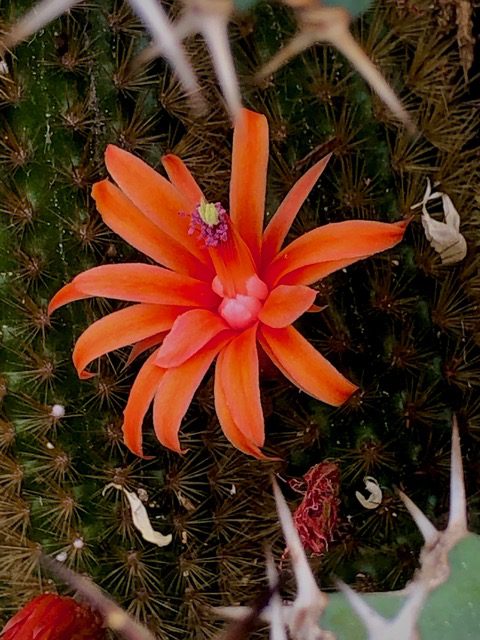
5) Rat Tail Cactus (Aporocactus Flagelliformis)
Don’t let an unattractive name, dissuade you from this lovely flowering cactus known for its long trailing stems, (thus the name “rat tail,”) making it perfect for hanging pots or baskets. Native to southwestern Mexico and parts of Central America, blossoms arrive in spring through early summer. Be careful when you’re looking at these, however, as the spines on this plant can be quite painful if you accidentally touch them.
6) Organ Pipe Cactus (Stenocereus thurberi)
These tall candelabra-like cactus can grow more than 26 feet in warmer, rocky parts of Mexico and Southern Arizona. It’s column-like, water-storing stems grow from a base just above ground level. Despite its rather large size in the wild, you can grow these in containers in warm to hot climates, as it is a slow-growing plant, allowing it to thrive in a large pot for many years of enjoyment.
These night bloomers open after sunset and close at some point in the morning. After flowering, the Organ Pipes produce large, ripe, edible fruit, that loses their spines while ripening, and have been described as tasting “better than watermelon.”
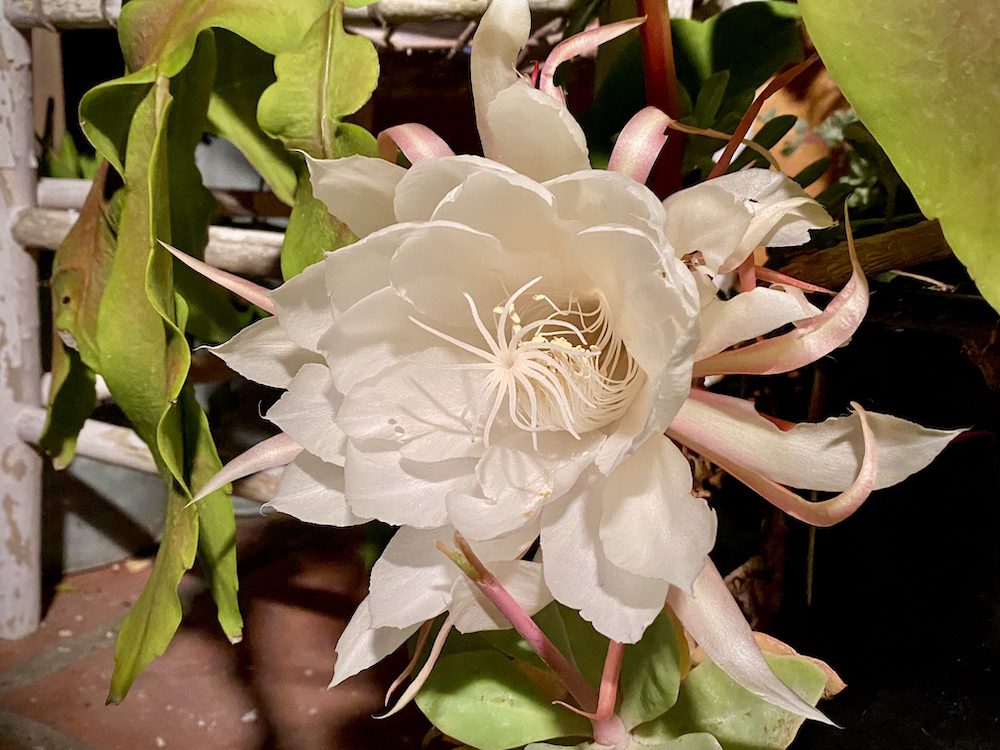
7) Queen of the Night Orchid Cactus (Epiphyllum Oxypetalum)
As the name implies, this is another night bloomer, usually blossoming after 8 pm and closing early in the morning. Growing naturally in shadier areas of the jungles of South and Central America, these plants produce long shoots that grab onto nearby trees in the wild.
In the United States, Queen of the Night does best in temperatures between 50-90 degrees Fahrenheit, preferring indirect sunlight.
Alas, each large, white, fragrant blossom lasts but one night, so it’s highly recommended that you watch this plant daily when it’s close to blossom time, or you could miss the show.
Most of these cacti can be easily propagated by taking cuttings, but make sure to wear your garden gloves, or expect to be pulling thorns out of your fingers!
Author Sherry Dean Curreri is a former CNN correspondent and flower lover. All of these images are from her scouting.
Share this post:

